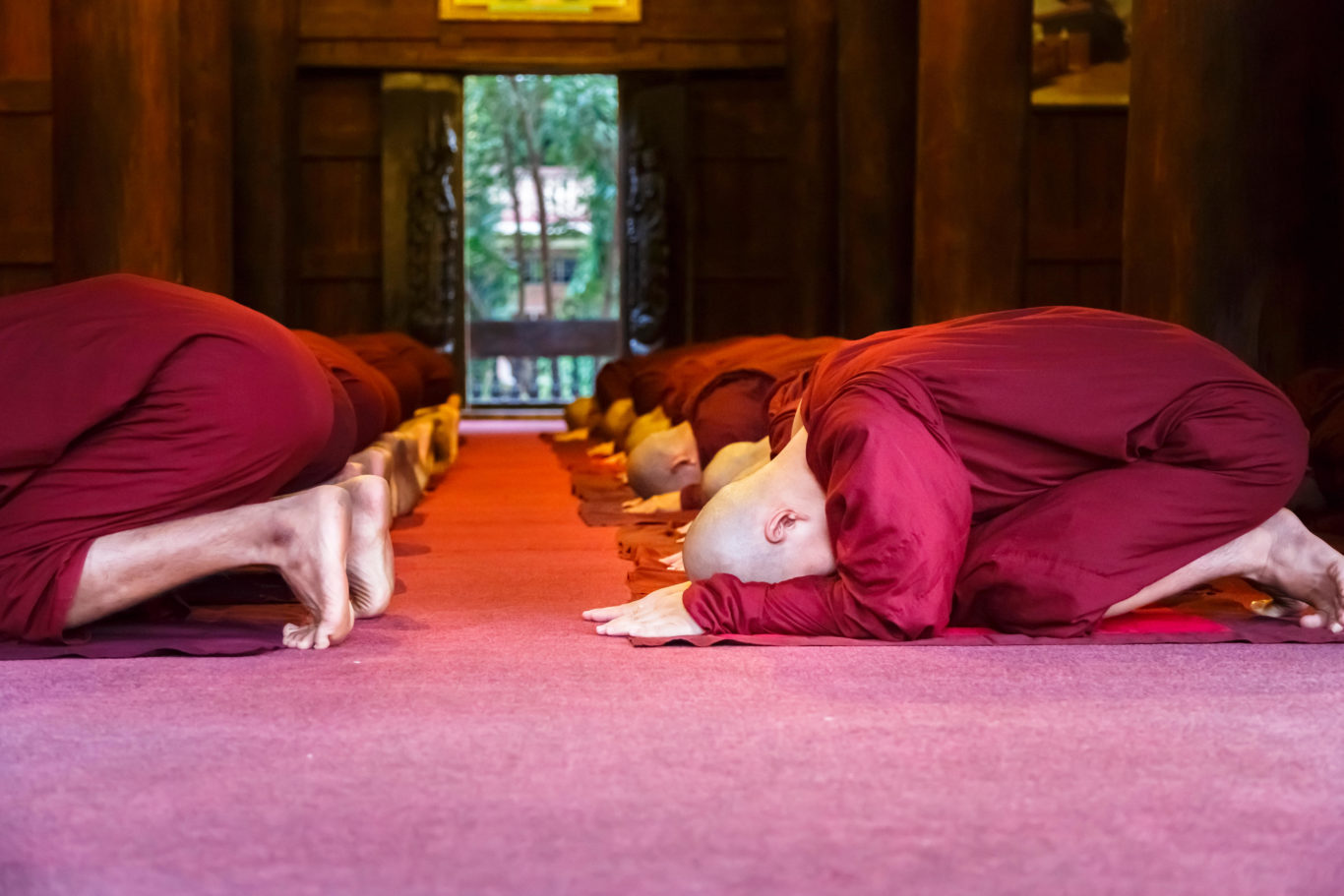Bowing as practice

Buddhist monks bow during an evening prayer ceremony at Shwe Kyin Monastery in Mandalay, Myanmar (Burma). | Graham Prentice / Alamy Stock Photo
In many Asian countries bowing has long been a common form of showing respect. After the Buddha’s enlightenment, his disciples bowed to him. Centuries after his death, when the first Buddha statues and images were made to depict the great teacher, Buddhists began to bow to them as a gesture of respect and reverence.
In Buddhist traditions today, it is common to bow to depictions of the Buddha as well as to images of bodhisattvas (enlightened beings); great teachers of the past; and one’s own teacher. In some traditions, one also bows to one’s meditation seat and to the other practitioners with whom one meditates. Some take this even further, bowing to the four cardinal directions in recognition of the presence of enlightened ones everywhere and in recognition that all of reality is a teacher.
Some traditions teach that bowing to the Buddha symbolizes bowing to the capacity for enlightenment, which exists in all beings. It is also a gesture of respect for the ardent effort exerted by all those on the path.

Tricycle is more than a magazine
Gain access to the best in sprititual film, our growing collection of e-books, and monthly talks, plus our 25-year archive
Subscribe now